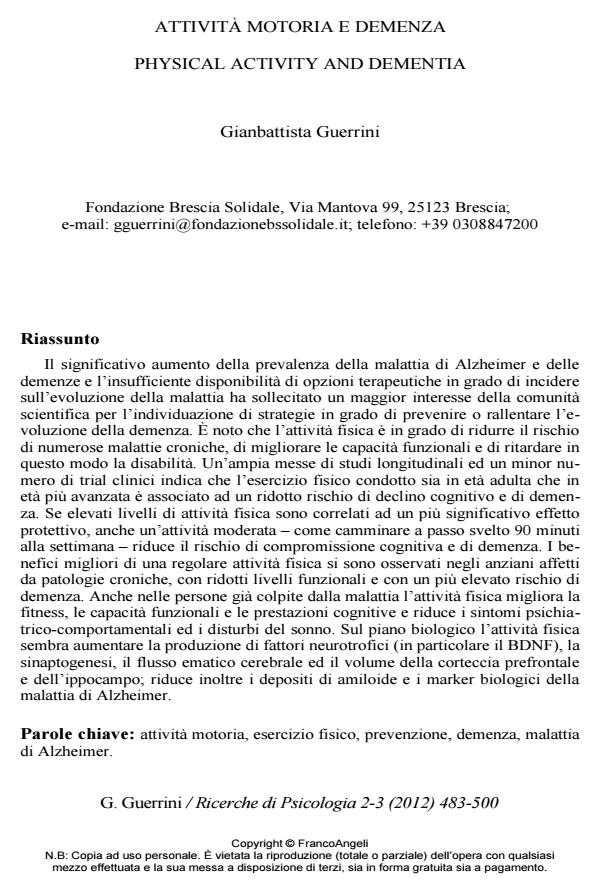Physical activity and dementia
Journal title RICERCHE DI PSICOLOGIA
Author/s Gianbattista Guerrini
Publishing Year 2013 Issue 2012/2-3
Language Italian Pages 18 P. 483-500 File size 218 KB
DOI 10.3280/RIP2012-002022
DOI is like a bar code for intellectual property: to have more infomation
click here
Below, you can see the article first page
If you want to buy this article in PDF format, you can do it, following the instructions to buy download credits

FrancoAngeli is member of Publishers International Linking Association, Inc (PILA), a not-for-profit association which run the CrossRef service enabling links to and from online scholarly content.
The significant increase in the number of people with Alzheimer’s disease and related dementias and the disappointing results of clinical and experimental studies on disease-modifying drugs have enhanced the need of identifying and implementing a preventive approach to the disease. Participation in physical activity reduces the risk of many chronic conditions, improves function and delays the onset of disability in elderly people. A large amount of observational studies and at a lesser extent of randomized controlled trials suggests that exercise both in middle and in older age is related to a reduced risk of cognitive decline and dementia. A protective effect is seen in people with high level of physical activity, but even mild to moderate level of exercise, such as walking at a brisk rate 90 minutes a week, may reduce risk of cognitive decline. People affected by chronic conditions and reduced function and at increased risk of dementia seem to draw better advantage from regular physical activity. In elderly people affected by dementia exercise improves fitness, physical function and cognitive performances and reduces affective and behavioural symptoms and sleep disorders. Both in animal and in humans exercise increases BDNF release, synaptogenesis, cerebral blood volume and the size of prefrontal cortex and hippocampus, and reduces amyloid depositions and the biological markers of Alzheimer’s disease.
Keywords: Physical activity, exercise, prevention, dementia, Alzheimer’s disease.
Gianbattista Guerrini, Attività motoria e demenza in "RICERCHE DI PSICOLOGIA " 2-3/2012, pp 483-500, DOI: 10.3280/RIP2012-002022